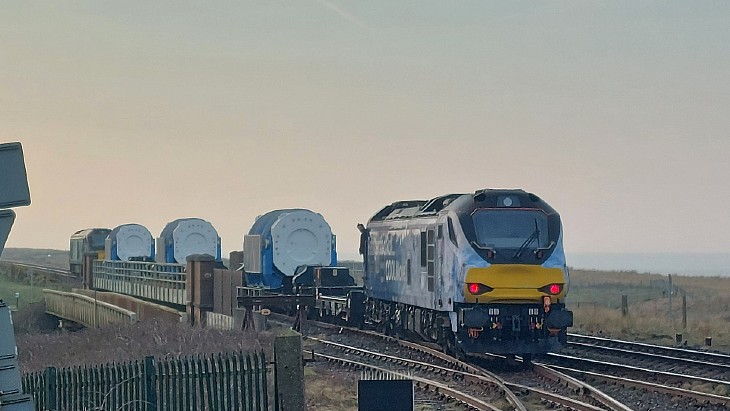Robot crawlers used in site 'first' at Paducah enrichment plant
.jpg)
Engineers have tested a robot pipe crawler designed to inspect piping previously used to support uranium enrichment operations at the former plant in Kentucky, which is in the early phases of deactivation. The system is customised to work in process gas piping and other equipment at the former enrichment plant, although a similar system is used to inspect municipal water pipelines.
The robot crawler carries a camera and a sodium iodide detector to locate uranium deposits through process piping and equipment. Workers can then download a file containing the data collected during the robot's scan to locate uranium deposits within the equipment. This new technology provides analysts a safe way to learn more about what these pipes contain without having to manually scan each section of pipe.
.jpg) An internal view of process gas piping at Paducah from the pipe crawler's camera
An internal view of process gas piping at Paducah from the pipe crawler's camera
The robotic technology enables analysts to look inside process gas piping and equipment without having to cut or drill into it, Myrna Redfield, programme manager at Four Rivers Nuclear Partnership - the US Department of Energy Office of Environmental Management's (DOE EM's) deactivation and remediation contractor for the PGDP - said. The crawler is also expected to play an important role in determining a safe and compliant method to dispose of the piping.
Although this is a site first for Paducah, similar technology has been used at the former Portsmouth gaseous diffusion plant in Ohio, Portsmouth/Paducah Project Office Site Manager Joel Bradburne said. "Shared lessons learned from Portsmouth allowed us to enhance these capabilities for use at Paducah, utilising best practices applications to the fullest," he added.
Uranium enrichment was carried out at Paducah from 1952 to 2013, with commercial enrichment conducted under lease from 1993 until 2013 when operations ceased and the gaseous diffusion facilities were returned to the DOE EM. Enrichment activities at Portsmouth ended in 2001.
_17992.jpg)
_75800.jpg)







..._58412.jpg)

